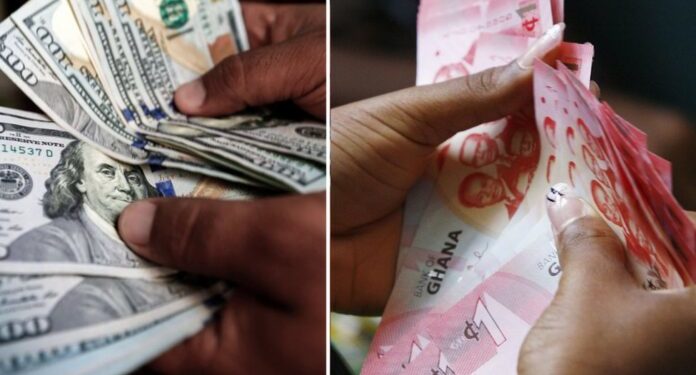Cedi faces headwinds amidst global dollar strength and domestic demand pressures
Year-to-date performance statistics paint a sobering picture, with the cedi experiencing depreciation of approximately 11.4% against the US dollar in the retail market and a more substantial 22% depreciation on the interbank market.
The Cedi finds itself navigating turbulent waters in the foreign exchange market as a confluence of factors threatens its stability. Analysts are predicting a marginal weakening of the local currency in the coming week, with two primary drivers at play: the resurgent strength of the US dollar on the global stage and mounting domestic demand pressures.
The US dollar’s resurgence, amplified by the Federal Reserve’s commitment to maintaining higher policy rates over an extended period, has cast a shadow over emerging market currencies, including the cedi. As investors seek higher returns in dollar-denominated assets, the cedi faces the inevitable strain of depreciatory forces.
Domestically, demand for foreign exchange has been surging, causing ripples in the Ghanaian market. Despite the Central Bank of Ghana’s efforts to mitigate these pressures through foreign exchange auctions and interventions, the cedi has struggled to hold its ground against the relentless march of the greenback.
Notably, the cedi has displayed a mixed performance against other major currencies. While it has managed to maintain relative stability against the euro, it has demonstrated resilience, closing 0.69% stronger against the British pound in the retail market.
Analysts, however, hold a glimmer of hope for the cedi’s near-term prospects. The potential disbursement of the cocoa syndication loan in December 2023 and expected inflows from the Economic Credit Facility, a substantial $600 million agreement with the International Monetary Fund, could serve as lifelines for the beleaguered currency, offering temporary respite from the prevailing challenges.
Year-to-date performance statistics paint a sobering picture, with the cedi experiencing depreciation of approximately 11.4% against the US dollar in the retail market and a more substantial 22% depreciation on the interbank market. These figures underscore the formidable hurdles the cedi has faced in maintaining its value against the backdrop of a strengthening US dollar and surging demand.
The cedi’s journey in the foreign exchange market remains fraught with uncertainties. The interplay of global economic dynamics, domestic demand pressures, and potential injections of capital will continue to shape its trajectory in the weeks to come, leaving both investors and policymakers in Ghana keenly attuned to its every fluctuation.
Source: norvanreports


